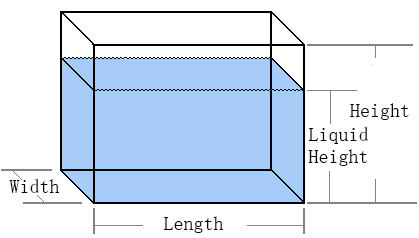Rectangular container calculator

A Rectangular Container Calculator is a tool used to calculate the properties of a rectangular container, such as its volume, surface area, or dimensions. It's particularly useful for containers or objects shaped like a rectangular prism (which is essentially a 3D version of a rectangle). These calculators are often used in industries such as packaging, storage, and logistics.
1. What is a Rectangular Container?
A rectangular container is a three-dimensional object with six faces, each of which is a rectangle. The opposite faces of a rectangular container are identical. It typically has:
- Length
- Width
- Height
2. Why Use a Rectangular Container Calculator?
A Rectangular Container Calculator is useful because it allows you to quickly calculate important properties of a container:
- Volume: The amount of space the container can hold.
- Surface Area: The total surface area of the container’s outer sides (useful for determining material requirements, such as the surface area for painting or covering).
- Dimensions: If you know some properties, such as volume or surface area, the calculator can help find unknown dimensions.
These calculations are essential when designing or using rectangular containers for various purposes, such as packaging, shipping, or storing items.
3. How Does it Work?
To use a Rectangular Container Calculator, you typically input values such as length, width, and height. The calculator then uses the relevant formulas to compute unknown values based on the inputs provided.
Common formulas used:
- Volume (V): V=length×width×height
- Surface Area (A): A=2(length×width+width×height+height×length)
4. When to Use a Rectangular Container Calculator?
A Rectangular Container Calculator is useful in situations like:
- Packaging: When you need to determine how much space a product or package will occupy.
- Shipping and Storage: When calculating how many items can fit in a rectangular container or the volume of storage space required.
- Construction/Design: When designing storage units, shelves, or any other structure that involves rectangular containers.
- Education: When solving geometry problems related to 3D shapes.